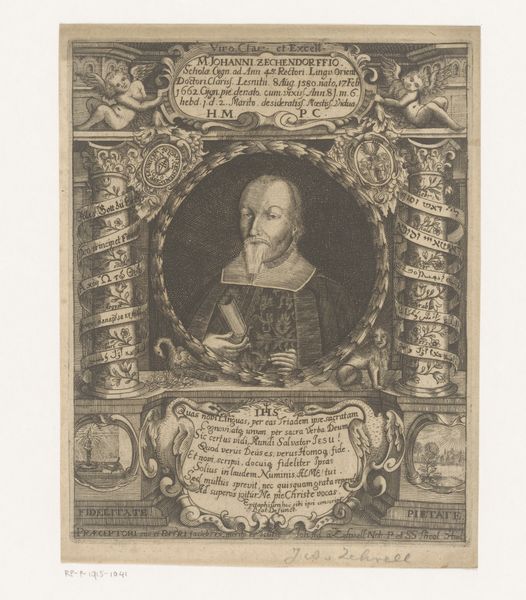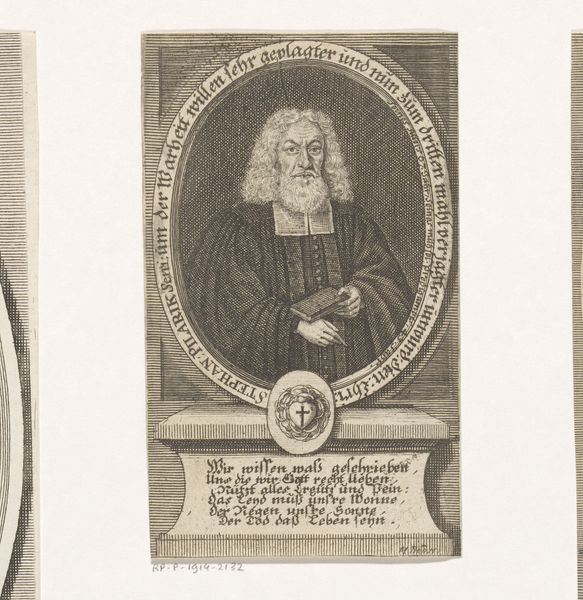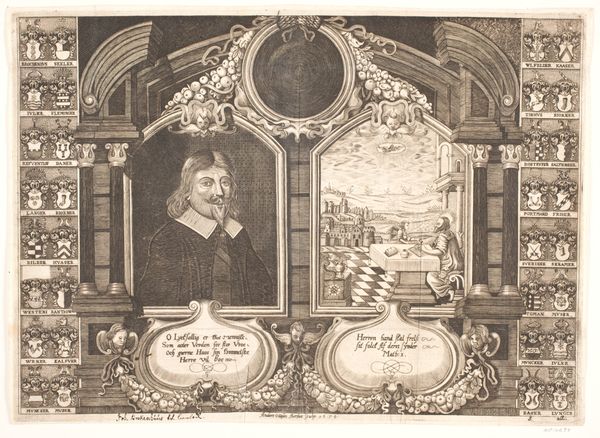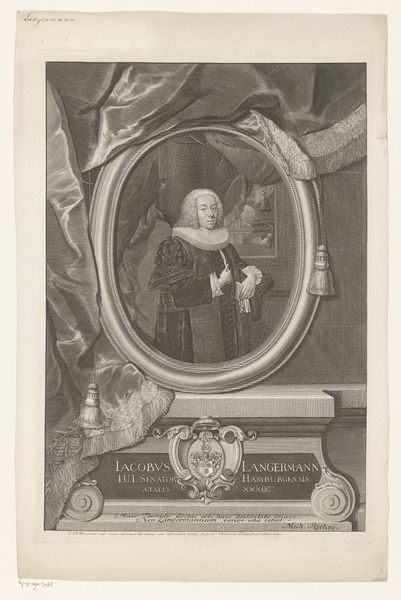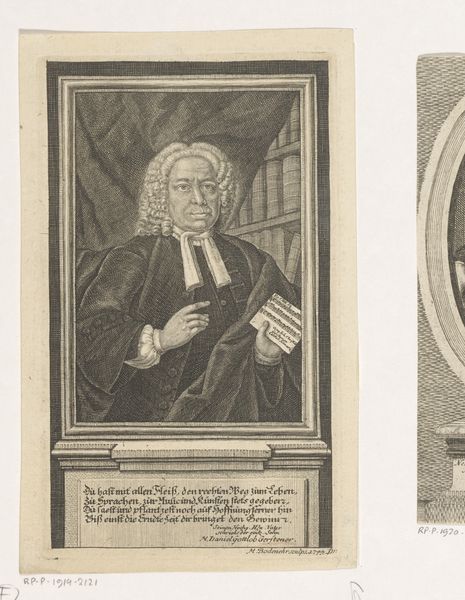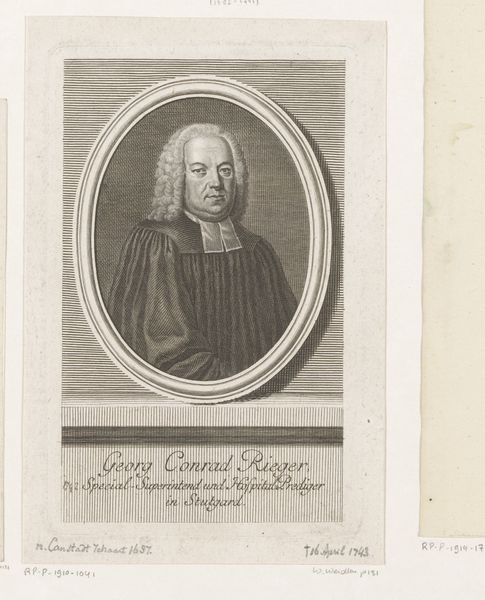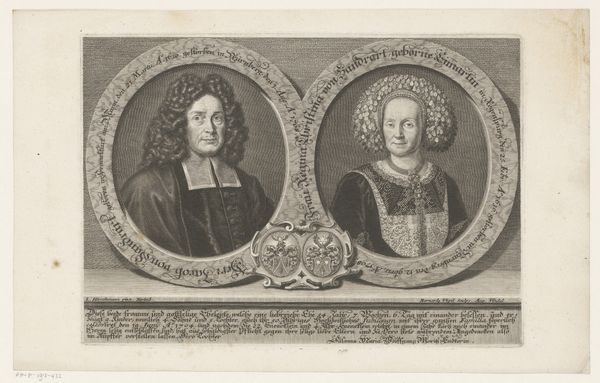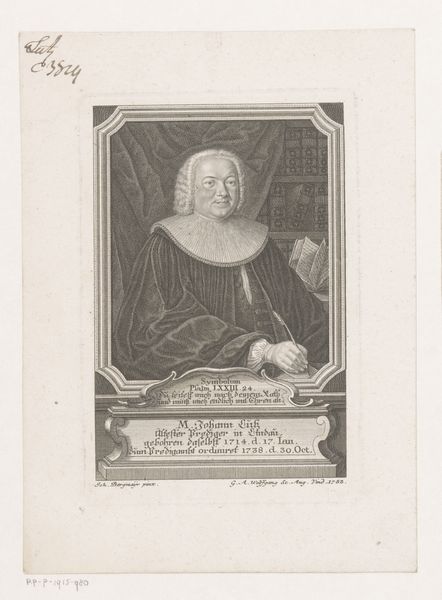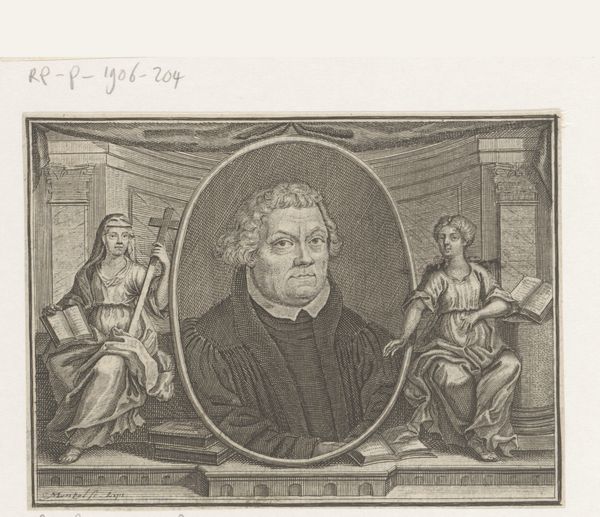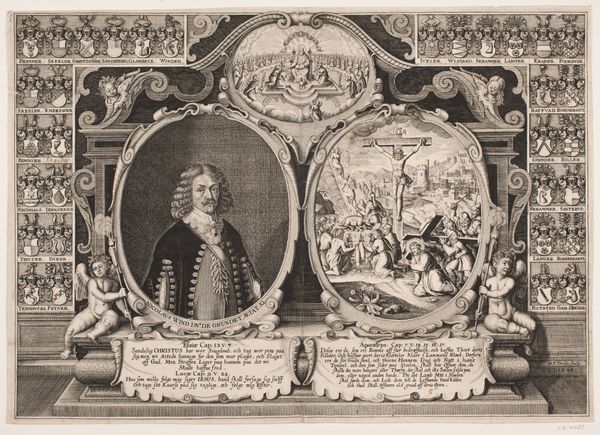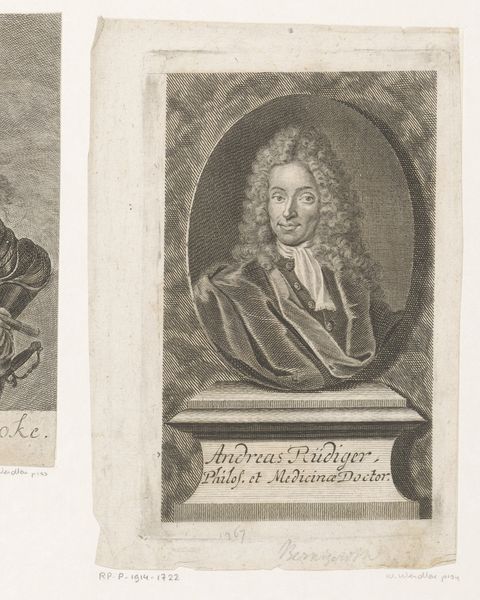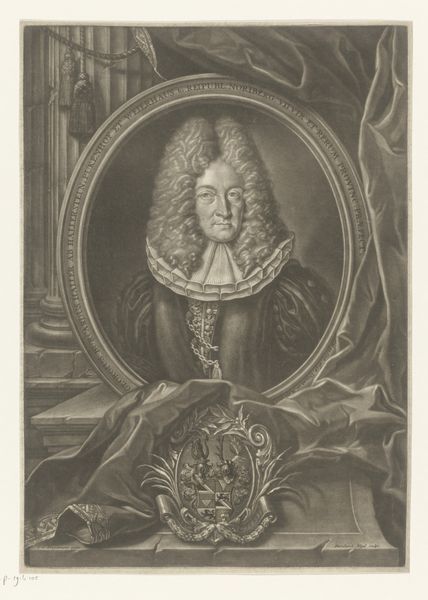
Portret van Martin Geier op 54-jarige leeftijd en vier verbeelde psalmen 1668
0:00
0:00
print, engraving
#
portrait
#
baroque
# print
#
book
#
dog
#
old engraving style
#
traditional style
#
history-painting
#
engraving
Dimensions: height 184 mm, width 311 mm
Copyright: Rijks Museum: Open Domain
Curator: Today, we're looking at a 1668 engraving by Johann Caspar Hoeckner, titled "Portret van Martin Geier op 54-jarige leeftijd en vier verbeelde psalmen," currently held at the Rijksmuseum. Editor: My initial impression is one of complexity. The stark contrasts typical of engraving, combined with the density of symbolic elements, creates a rather intense visual experience. Curator: The composition is divided. On the left, we have the portrait of Martin Geier himself, framed within an elaborate oval. Note the meticulous detail in rendering his features, the texture of his garments. And the flanking imagery of the skull and cross—typical vanitas. Editor: Right. But observe how the engraving itself necessitates a particular working method. The labour involved in producing those fine lines—the physicality of the process—resonates. It's not just about representation; it's about the tangible effort embedded within the matrix, literally pressed upon the paper. Curator: Absolutely, the technique is integral to understanding the piece, informing our perception. And if we turn our attention to the right, we see four scenes illustrating psalms of David. Editor: It’s interesting that Hoeckner embeds another image of a printing press into these biblical narratives. It draws connections between textual production and artistic process, showing the craft involved in disseminating not only holy scriptures, but also art and thought. It serves as a clear, visual reminder of material origins and social impact. Curator: Indeed. It’s as if Hoeckner is deliberately conflating the spiritual with the scholarly and the act of creation, presenting us with multiple layers of meaning. One must decode each symbol, and assess its purpose in conjunction with those around it. Editor: I find the stark juxtaposition between the individual portrait and these visual renderings particularly thought-provoking. It makes me consider print production beyond mere aesthetic appreciation, instead asking fundamental questions of purpose and reception within 17th-century networks of knowledge. Curator: A most valuable insight. I trust listeners have now been equipped to decode Hoeckner’s symbolic portrait with renewed engagement. Editor: A renewed and informed appreciation for what images make possible.
Comments
No comments
Be the first to comment and join the conversation on the ultimate creative platform.
